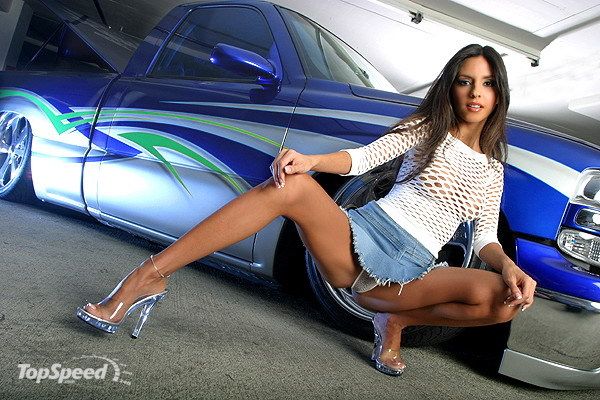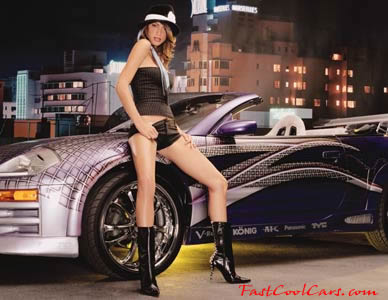
 Mercedes' A-Class has historically been a four-door hatchback more concerned with environmentally friendly utilitarian duties than making a statement about style. For the 2011 New York and Shanghai Auto Shows, Mercedes intends to change that frumpy image with an aggressively styled concept that looks more performance hot-hatch than green hipster-hauler, taking the A-Class in an entirely new direction. Thought it is just a concept, it might show the direction the front-wheel drive platform is headed-one that will appeal to a more youthful and enthusiastic buyer.
Mercedes' A-Class has historically been a four-door hatchback more concerned with environmentally friendly utilitarian duties than making a statement about style. For the 2011 New York and Shanghai Auto Shows, Mercedes intends to change that frumpy image with an aggressively styled concept that looks more performance hot-hatch than green hipster-hauler, taking the A-Class in an entirely new direction. Thought it is just a concept, it might show the direction the front-wheel drive platform is headed-one that will appeal to a more youthful and enthusiastic buyer.
 Looking ready to go head-to-head with the likes of the Audi A3 and Volvo C30, the A-Class Concept is powered by a 210-horsepower 2.0-liter direct-injection turbocharged I-4 mated to a dual-clutch transmission. In hot-hatch tradition, this powertrain is splayed out transversely across the front of the car.
Looking ready to go head-to-head with the likes of the Audi A3 and Volvo C30, the A-Class Concept is powered by a 210-horsepower 2.0-liter direct-injection turbocharged I-4 mated to a dual-clutch transmission. In hot-hatch tradition, this powertrain is splayed out transversely across the front of the car.
 The design language seen on this new A-Class first appeared on another concept, the F800 Style shown at the 2010 Geneva Auto Show. The body consists of free-flowing surfaces accented with sharp creases. Mercedes states that the styling was influenced by wind and waves and reflects aviation engineering. This theme is reflected in the interior, with see-through fabric stretched over a skeletal structure. The vents, instrumentation, and shifter all reflect avionic controls, looking minimalist and very futuristic at the same time.
The design language seen on this new A-Class first appeared on another concept, the F800 Style shown at the 2010 Geneva Auto Show. The body consists of free-flowing surfaces accented with sharp creases. Mercedes states that the styling was influenced by wind and waves and reflects aviation engineering. This theme is reflected in the interior, with see-through fabric stretched over a skeletal structure. The vents, instrumentation, and shifter all reflect avionic controls, looking minimalist and very futuristic at the same time.
 The A-Class Concept is stuffed with technology. Mercedes boasts of being the first in the compact segment to offer a radar-based collision avoidance system and adaptive brake technology. The system audibly and visually warns inattentive drivers about possible collisions while preparing the braking system for an immediate and powerful stop. Infotainment details are handled by a fully integrated smartphone and use a three-dimensional dash display formed of magenta-colored laser lines. The interior seats four in separate buckets, and one long center console is shared by both the front and rear seats.
The A-Class Concept is stuffed with technology. Mercedes boasts of being the first in the compact segment to offer a radar-based collision avoidance system and adaptive brake technology. The system audibly and visually warns inattentive drivers about possible collisions while preparing the braking system for an immediate and powerful stop. Infotainment details are handled by a fully integrated smartphone and use a three-dimensional dash display formed of magenta-colored laser lines. The interior seats four in separate buckets, and one long center console is shared by both the front and rear seats.
 Rumors of Mercedes bringing the A-Class to the American market have been brewing for years. It looks like we may be one step closer, but in an entirely unexpected form. Instead of a smallish people-mover, it may very well end up being an upscale performance hatchback. There is even a possibility it may turn into multiple A-Class vehicles. We will get our first look at the concept in New York later this month. Maybe Mercedes will have more information about future plans then.
Rumors of Mercedes bringing the A-Class to the American market have been brewing for years. It looks like we may be one step closer, but in an entirely unexpected form. Instead of a smallish people-mover, it may very well end up being an upscale performance hatchback. There is even a possibility it may turn into multiple A-Class vehicles. We will get our first look at the concept in New York later this month. Maybe Mercedes will have more information about future plans then.




























